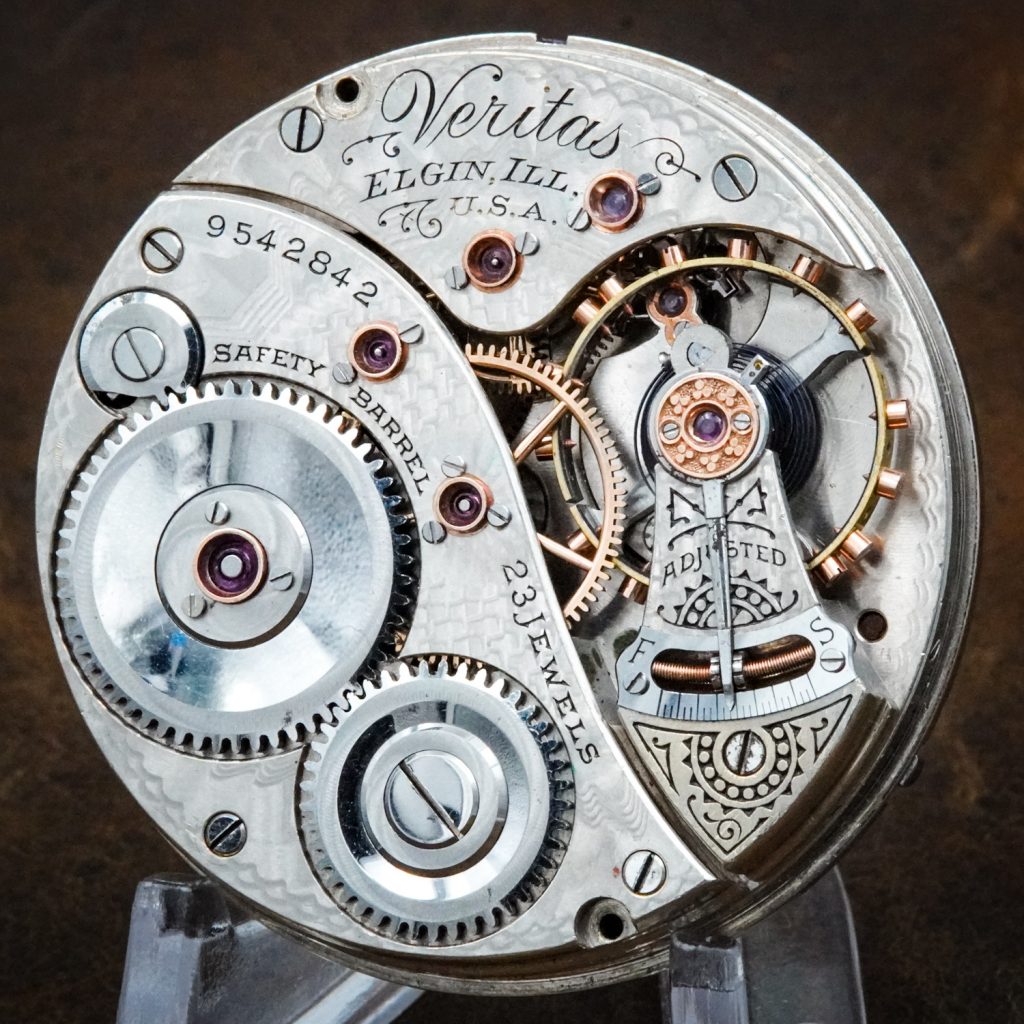A Dial Feet Location Tool for Seth Thomas Pocket Watches
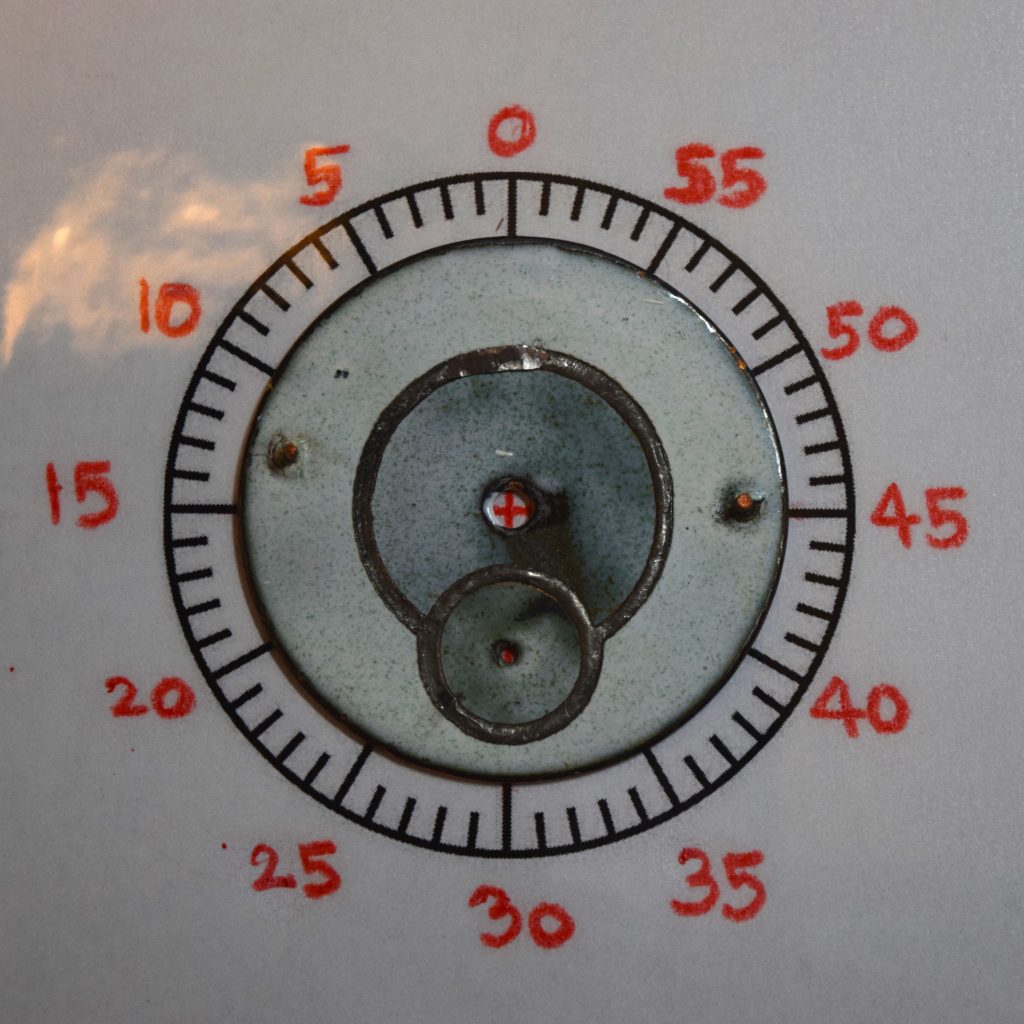
(A guest post by Jonathan Luysterborghs) Do you have the correct replacement dial in your kit for the vintage pocket watch that you’re considering buying despite its present dial being cracked and cratered or possibly missing? Are you SURE?
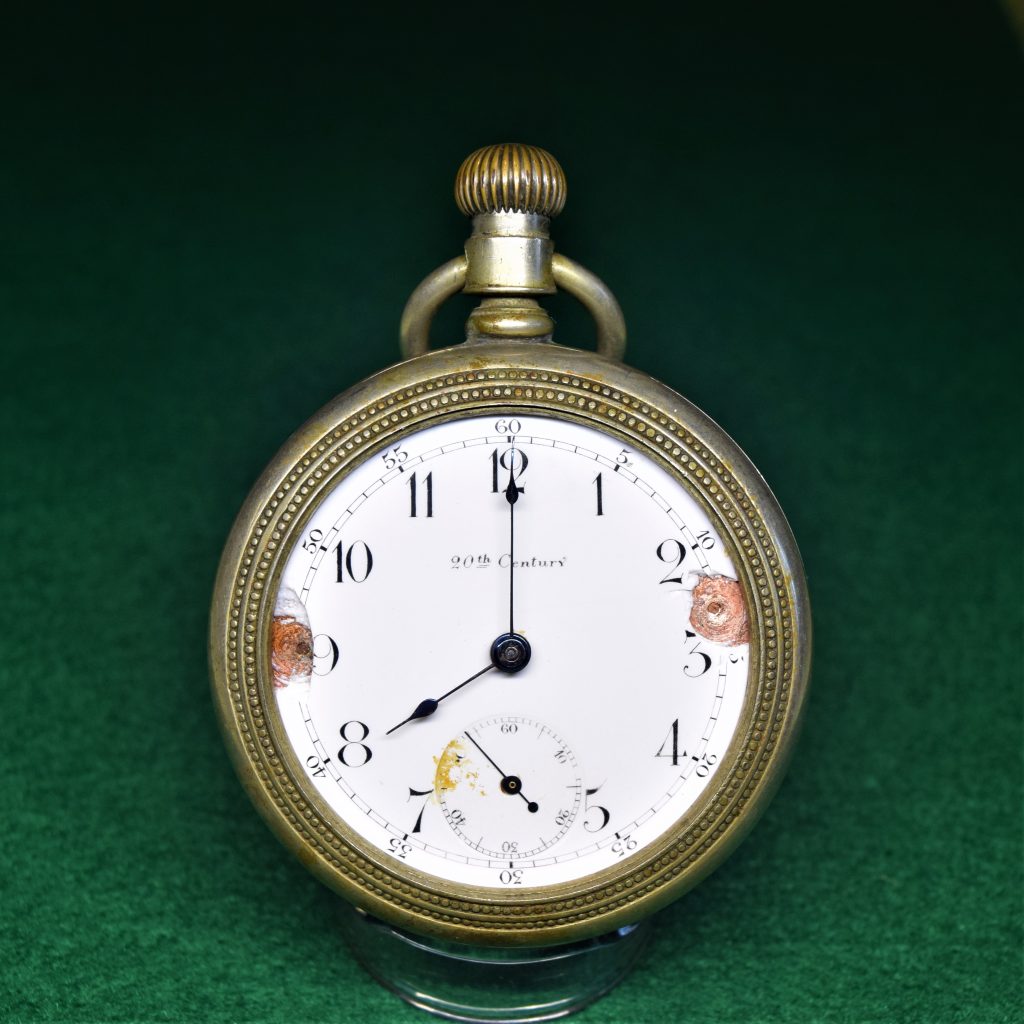
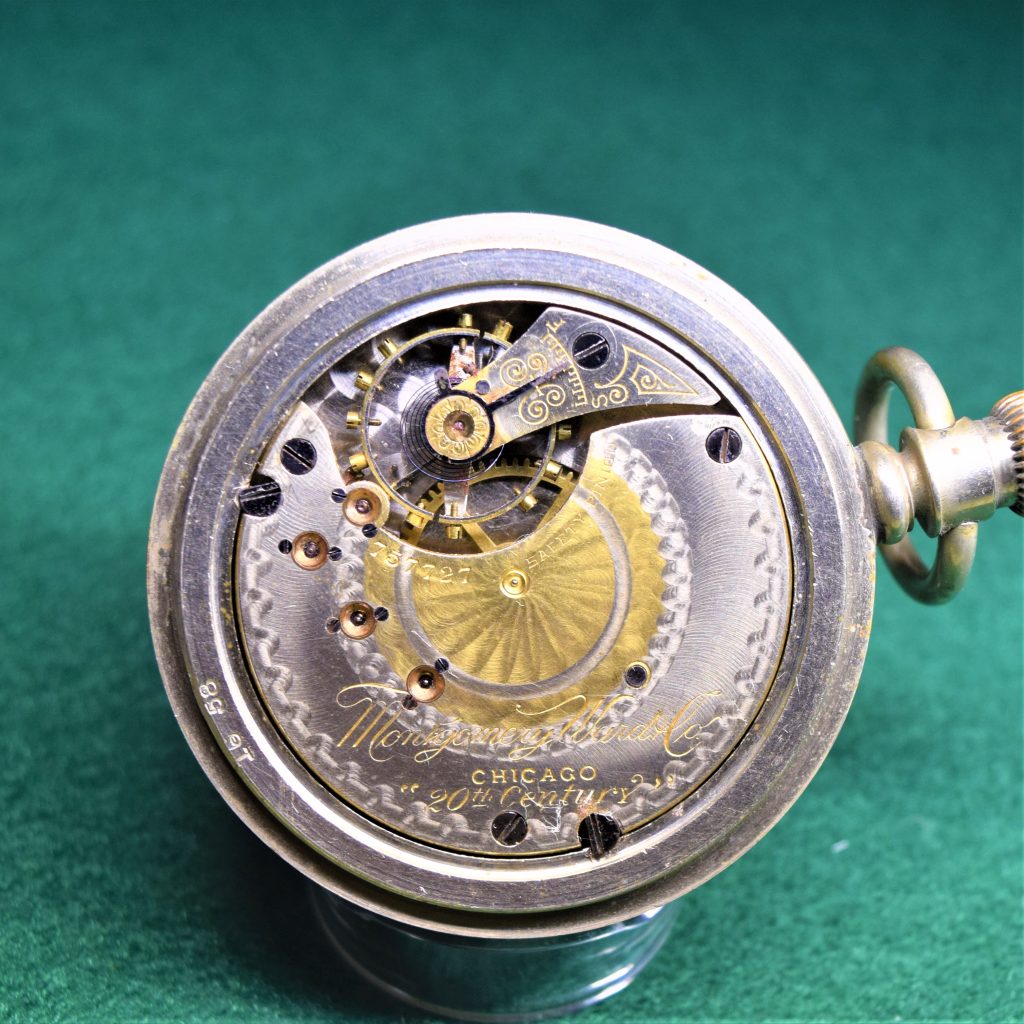
The dials that you have in stock may have the desired signature, numeral set, minute track, and marginals; but sorting through a stock of vintage dials can be confusing and frustrating enough when considering the proper size, the changes in style at different eras of production, the correct signature if it’s a private label or named grade; and if the manufacturer used different dial feet locations within the same size and model of movements it could make you decide to call it a day and wait to purchase a movement that already has a viable, appropriate dial installed.

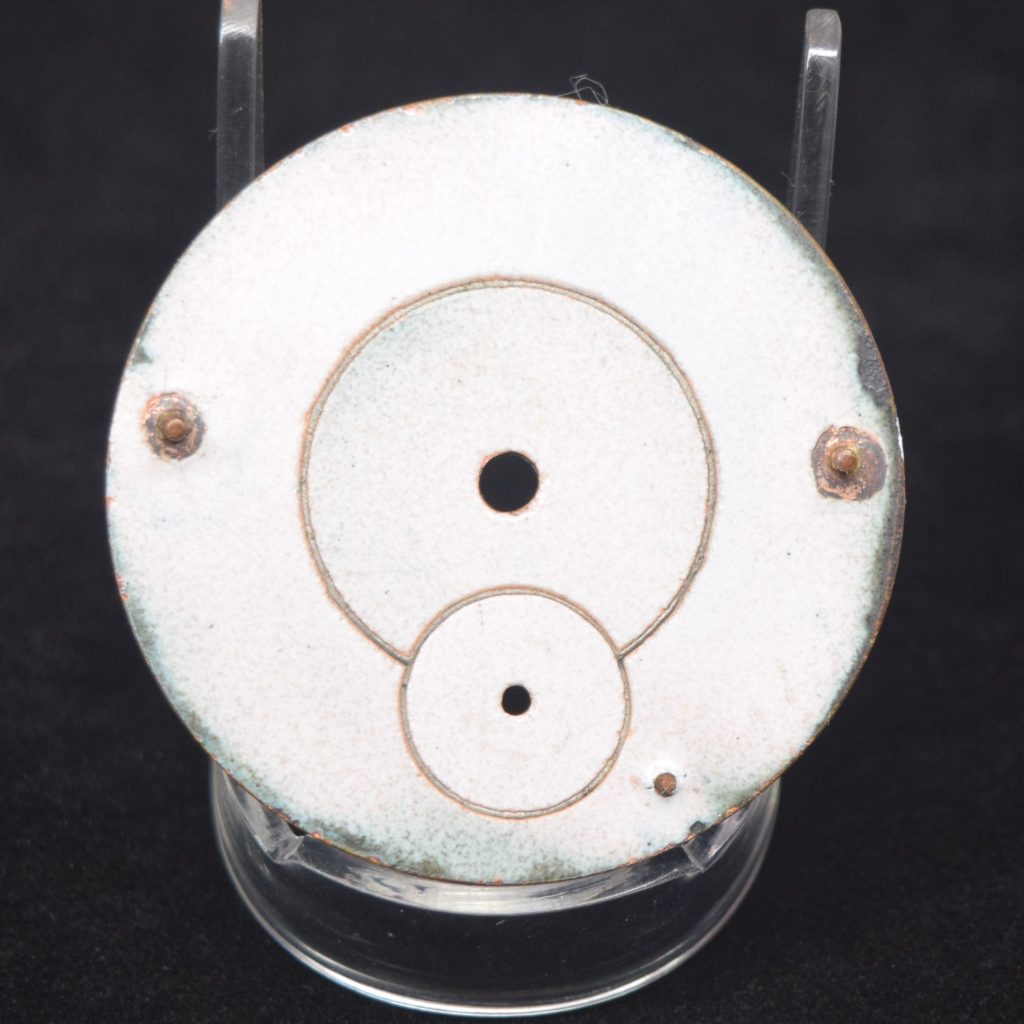
Few people are very good at accurately visualizing the minute track in reverse while looking at the dial feet on the back of an enamel pocket watch dial. At some point, I decided to just make a cheap, simple tool to avoid that particular brand of anxiety in my time spent with Seth Thomas pocket watches. I would like to share the tool with you so that you can use it with whichever brands of pocket watches you enjoy exploring. In this article, you will find a detailed description of the simple tool and several practice exercises demonstrating its use with pocket watch dials of various sizes.
I found an image of a blank dial online and scaled it to accommodate an 18-size pocket watch dial in its center area between the markings in the minute track.
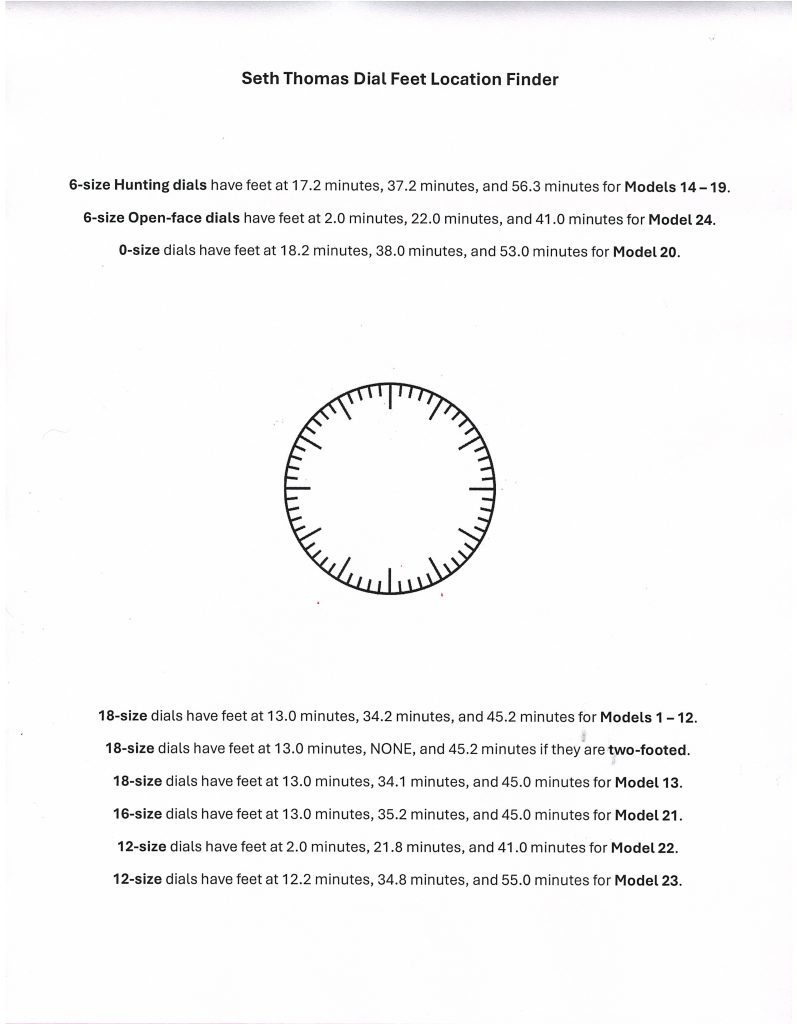
I used a red colored pencil to connect the 0 minutes mark to the 30 minutes mark and the 15 minutes mark to the 45 minutes mark. I also added red 5-minute marginals outside of the minute track, counting upwards counter-clockwise so that the marks would correspond with the minutes marked on the front of the dial when it is lying face down. With any common size of pocket watch dial lying face down on the tool I just need to center the red “X” in the center hole and rotate the dial until a point on the lower half of the vertical red line is visible through the hole in the seconds bit. I only collect Seth Thomas pocket watches, so it was possible to also include descriptions on the tool of where the dial feet are located for each Seth Thomas Pocket Watch Dial size and orientation, open-face or hunting. The posted image of the tool should be the right size to print directly on 8.5 X 11 (letter size) paper. I’m not sure how the scaling will work for our friends and readers outside of the U.S.A. using A4 paper. I frequently faced that dilemma during my three-year stay in China, where everything was also metric. I’m sure that you’re much more adept at converting documents than I ever was. After printing the tool out, lamination will make it a more permanent addition to your toolbox.

The first set of dial feet that we’ll use the tool to locate is on an 18-size double-sunk Seth Thomas #1228 Roman dial with a ring minute track and red 5-minute marginals. There are only two dial feet present on this dial.
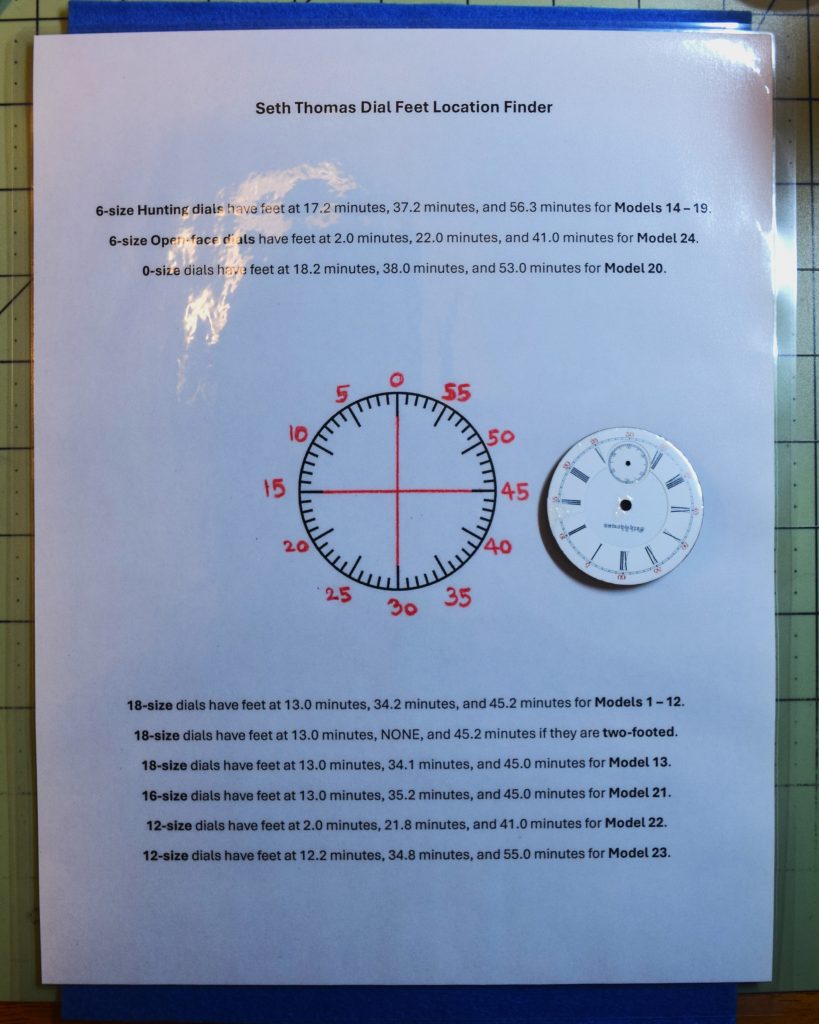
According to “American Pocket Watches” by Roy Ehrhardt & William “Bill” Meggers, Revised 1999, these dial feet should be located at 13.0 minutes and 45.2 minutes. Upon flipping the dial over, centering the red “X” in the center hole, and rotating the dial until the red line appears through the hole in the seconds bit, it appears that we do have dial feet at 13.0 minutes and 45.2 minutes.
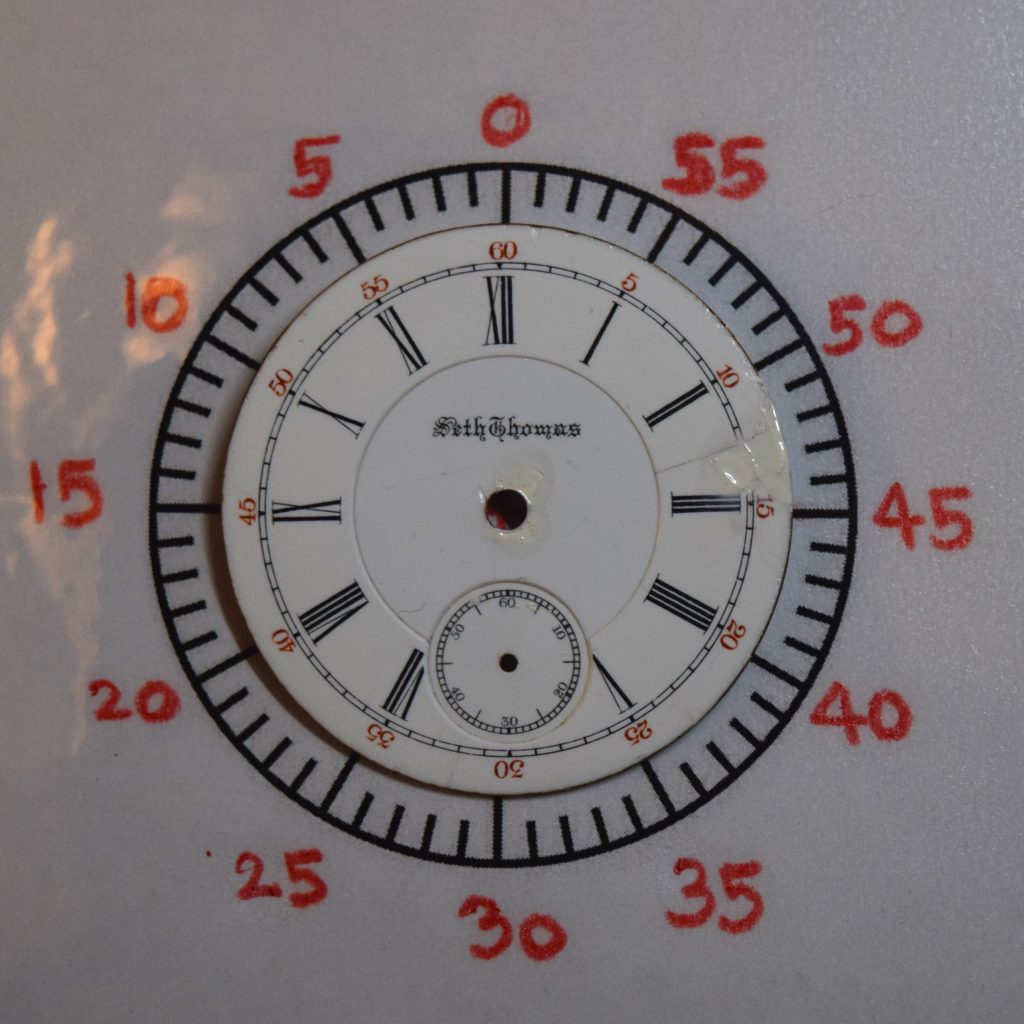

The second set of dial feet that we will use the tool to locate is on a 12-size Seth Thomas dial with a hash mark minute track and no marginals. After flipping the dial over, lining up the red “X” with the center hole, and rotating the dial until the red line is visible through the hole in the seconds bit, we can read the dial feet locations as 2.0 minutes, 21.8 minutes, and 41.0 minutes. This 12-size dial is for the open-face Model 22 movement. It will not work with the 12-size open-face Model 23/Bridge Model movement.
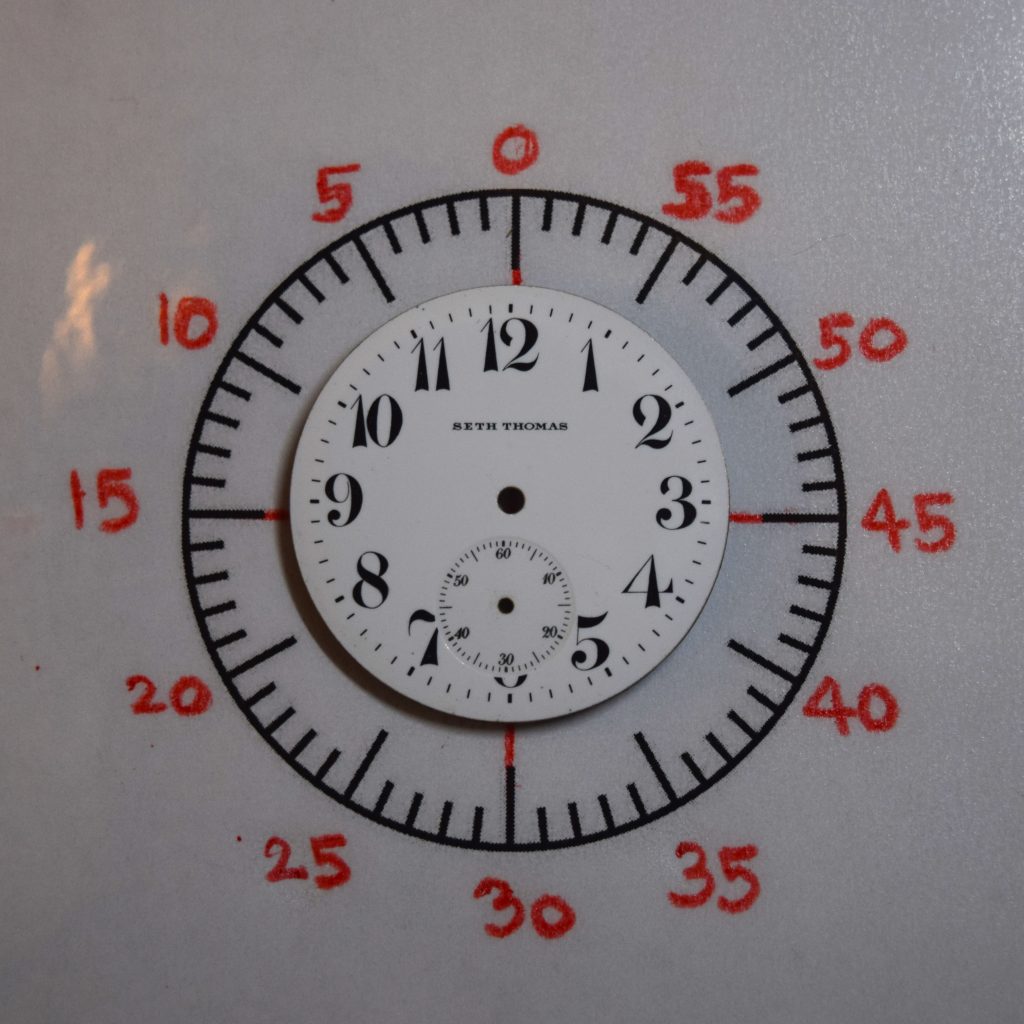
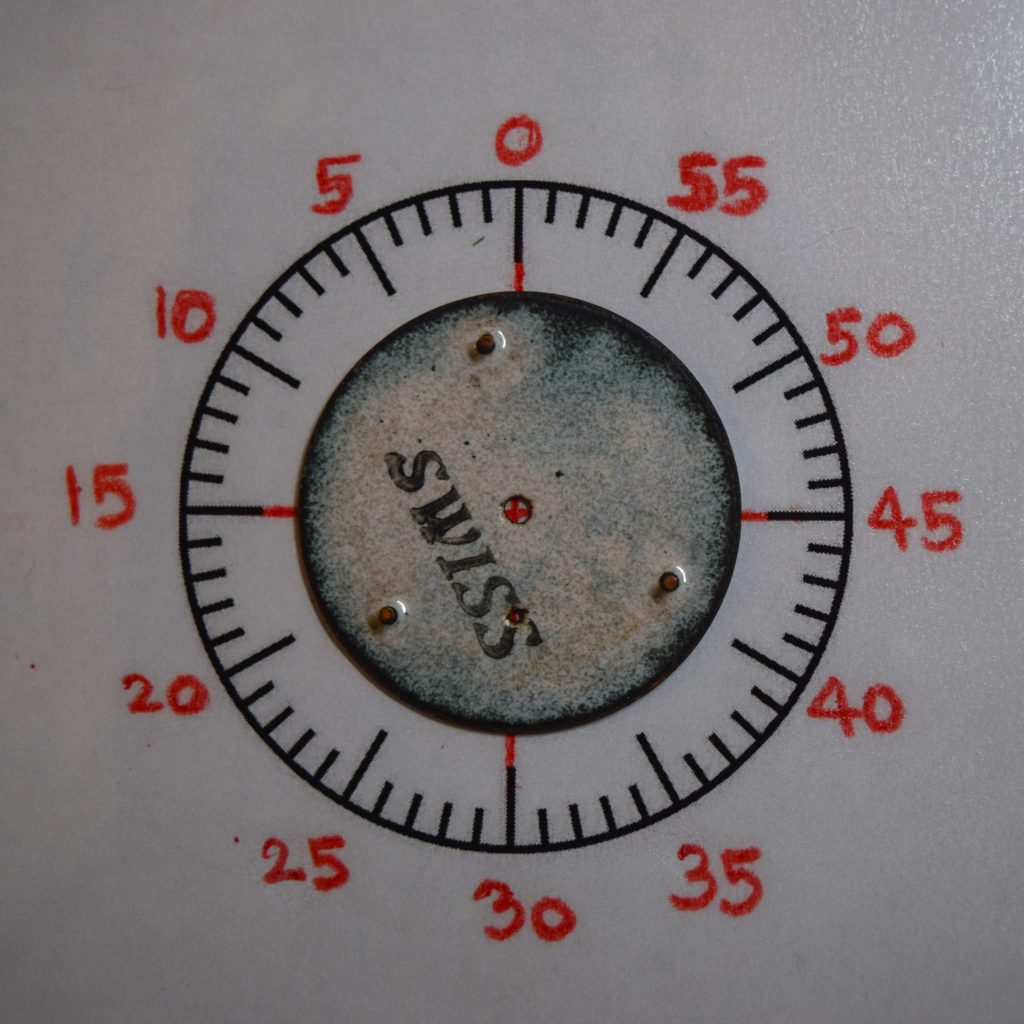
The third set of dial feet that we will use the tool to locate is on a 6-size Century U.S.A. #1248 dial with a ring minute track and black 5-minute marginals. After flipping the dial over, lining up the red “X” with the center hole, and rotating the dial until the red line is visible through the hole in the seconds bit, we can read the dial feet locations as 17.2 minutes, 37.2 minutes, and 56.3 minutes. This 6-size dial is for the hunting-oriented Model 18 Century U.S.A. movements, not the open-face Model 24 movements.
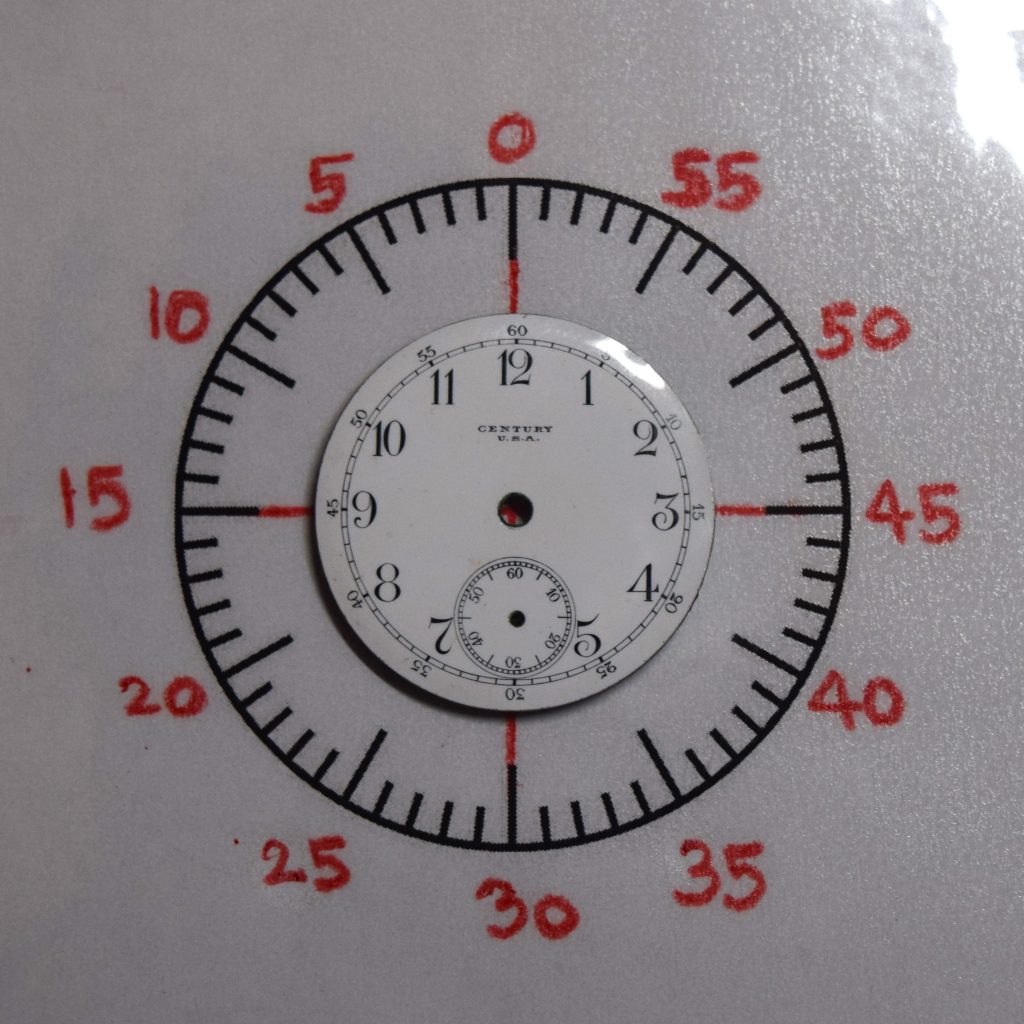
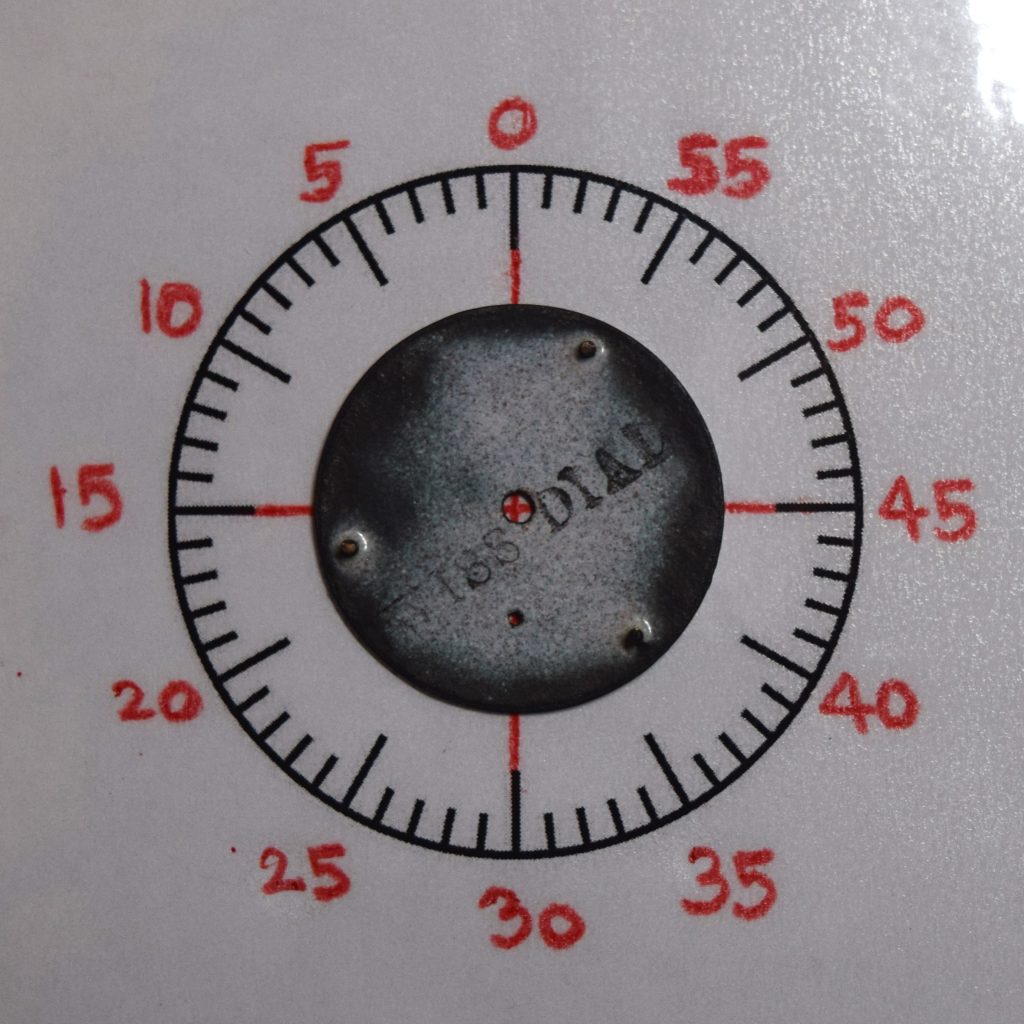
It would be unrealistic to expect that we could actually pinpoint the location of dial feet to tenths of a minute using this simple tool. It would be difficult enough to pinpoint the location to an exact minute at all, but if we know what the possible locations are on the set of dials that we are examining, we can much more easily sort our dials into marked dial holders and be aware of what we actually have in stock. This tool will just help you to verify more reliably that you are looking at, and interpreting, the dial feet locations on your pocket watch dials correctly.
This simple tool can obviously be used with all pocket watches across manufacturers, both foreign and domestic. It can easily be customized to match your most frequently encountered brands. I hope that it will make your time spent working with pocket watches more productive, enjoyable, and fulfilling.
For a more in-depth study of pocket watch dials, you can explore the Illustrated Guide to Seth Thomas Pocket Watch Dials. The information presented in that article applies to watches across pocket watch brands and manufacturers.

